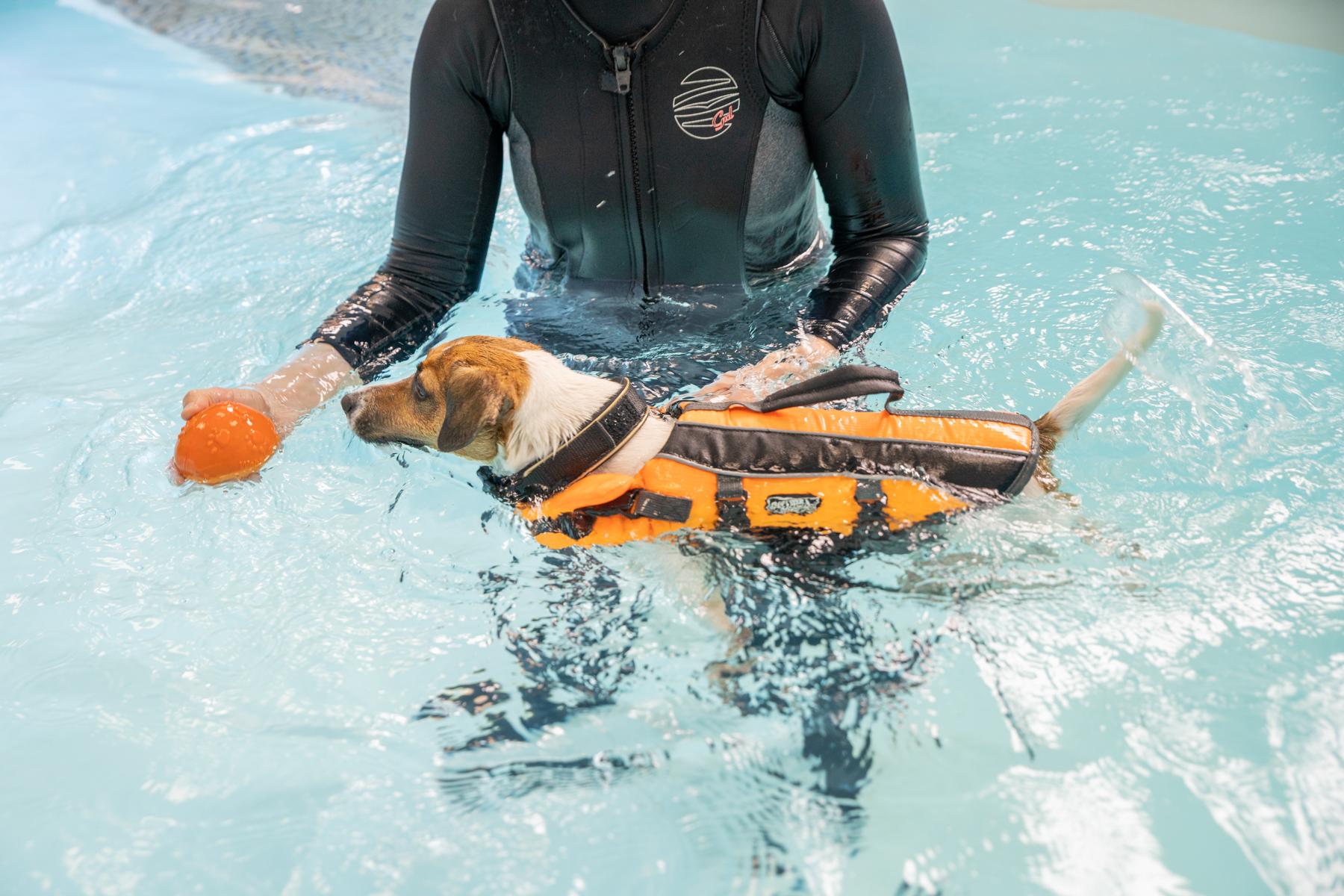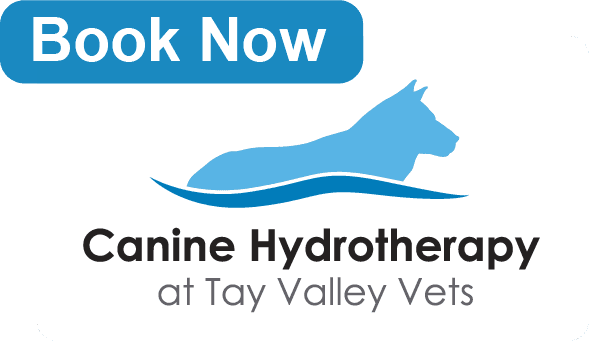Tay Valley Vets have installed a 2 x 4 metre indoor heated canine hydrotherapy pool.
Our veterinary team have designed individual courses of hydrotherapy treatment to suit each dog, with one of our trained veterinary staff accompanying your dog in the water at all times.
Our pool is:
- Easily accessible – It is sunk into the floor and has in place access ramps.
- Heated – Submerged water jets are in place for dogs undergoing resistance swimming.
To find out more about how hydrotherapy treatment can benefit your dog, or to book an appointment, please contact our reception team on 01738 621415.
Our veterinary team have designed individual courses of hydrotherapy treatment to suit each dog, with one of our trained veterinary staff accompanying your dog in the water at all times.
Our pool is:
- Easily accessible – It is sunk into the floor and has in place access ramps.
- Heated – Submerged water jets are in place for dogs undergoing resistance swimming.
To find out more about how hydrotherapy treatment can benefit your dog, or to book an appointment, please contact our reception team on 01738 621415.
Hydrotherapy is particularly good at improving the quality and rate of healing following surgery or traumatic injury
For more information about our Canine Hydrotherapy services, or to book an appointment, get in touch with us today.



